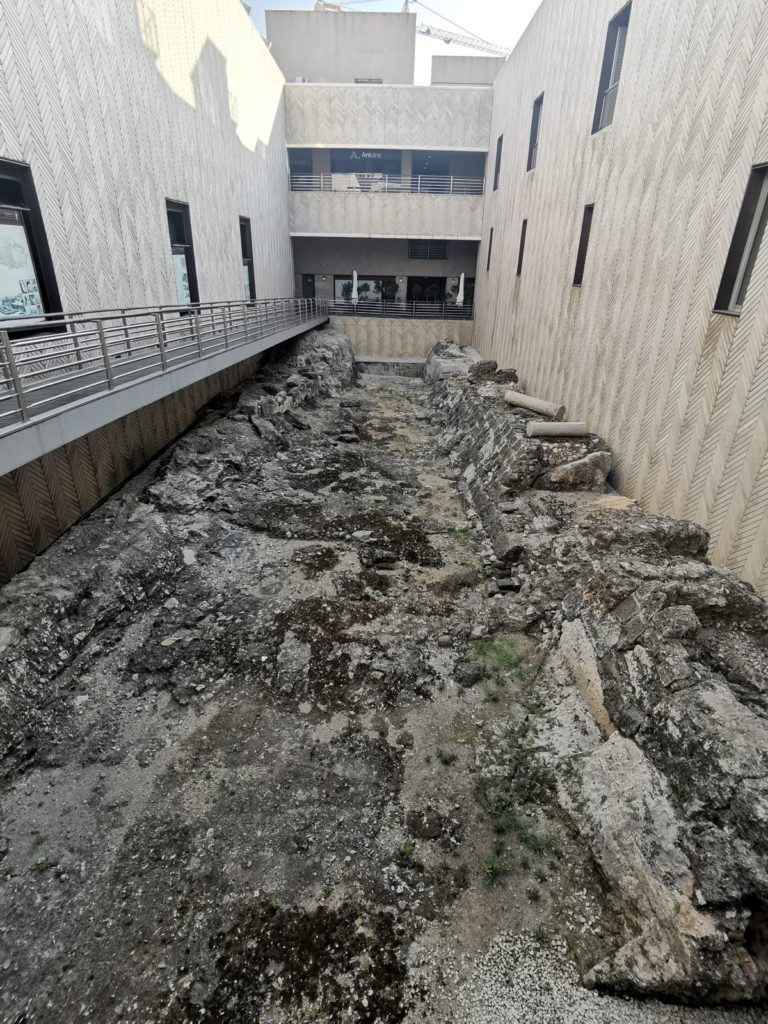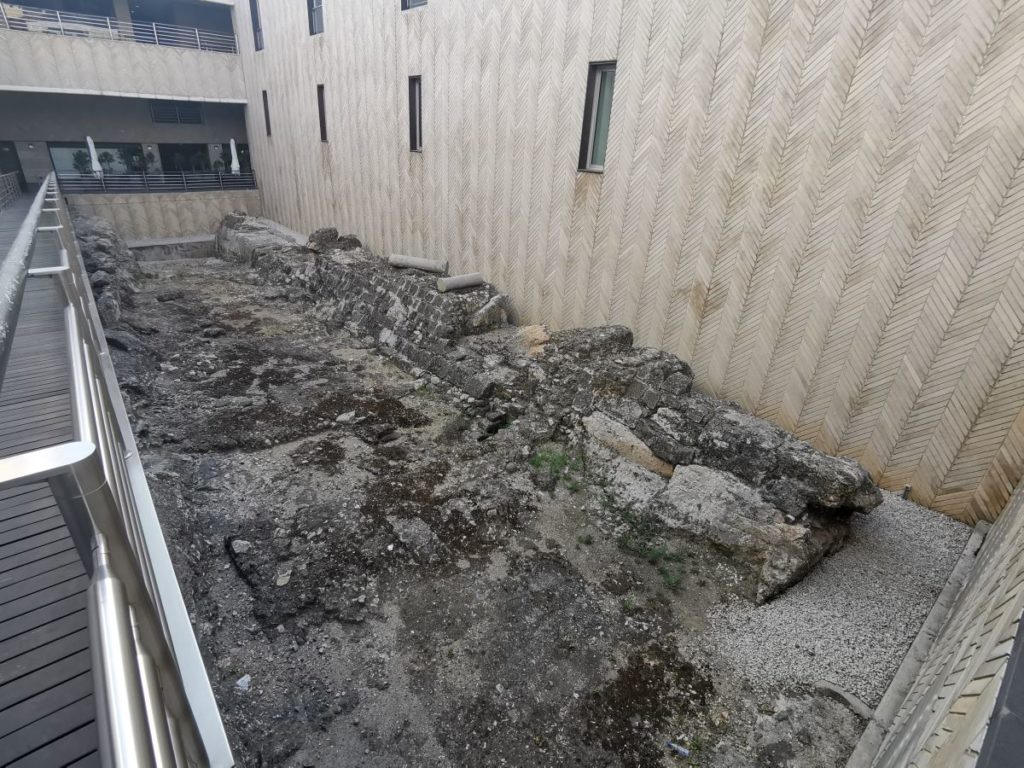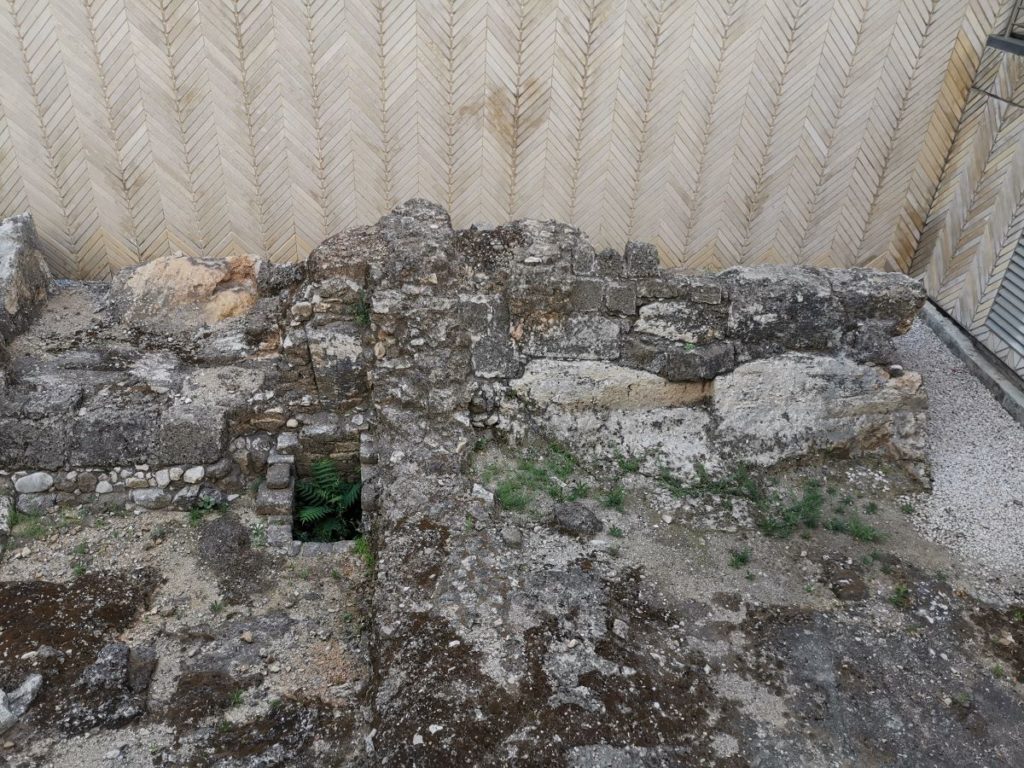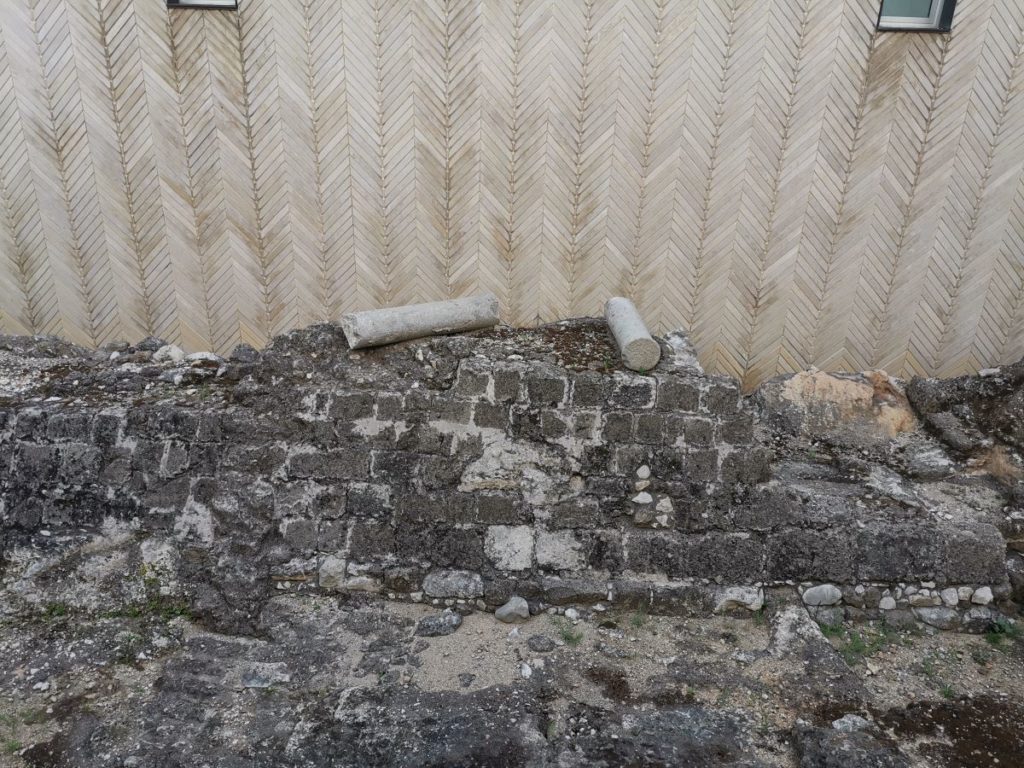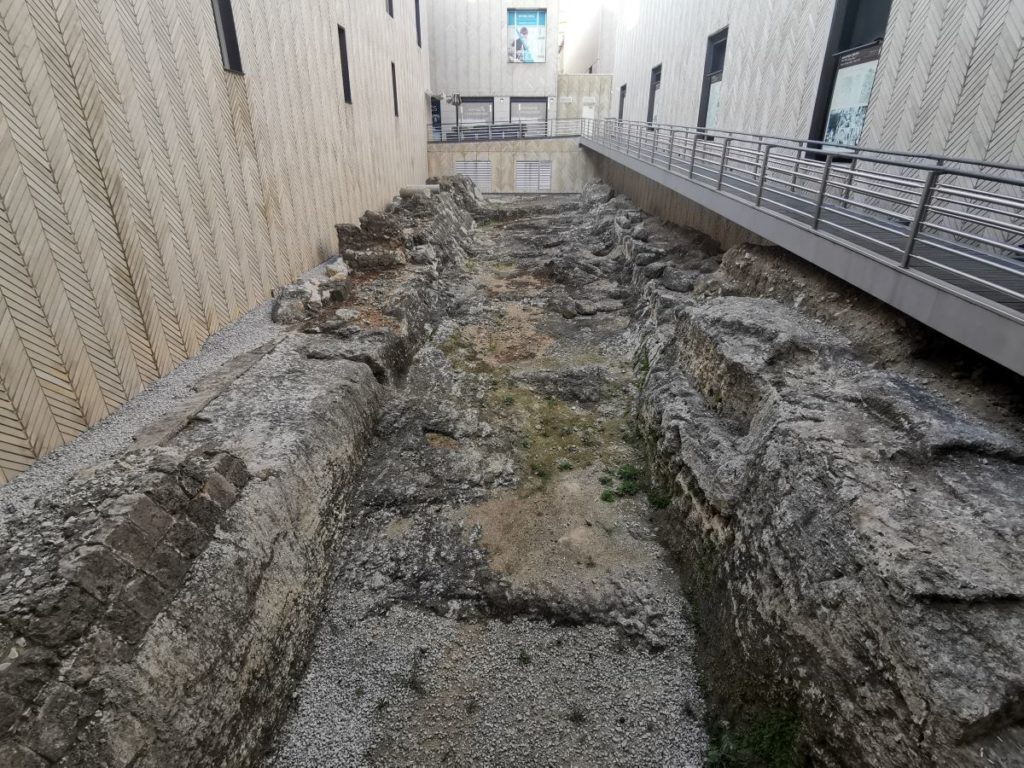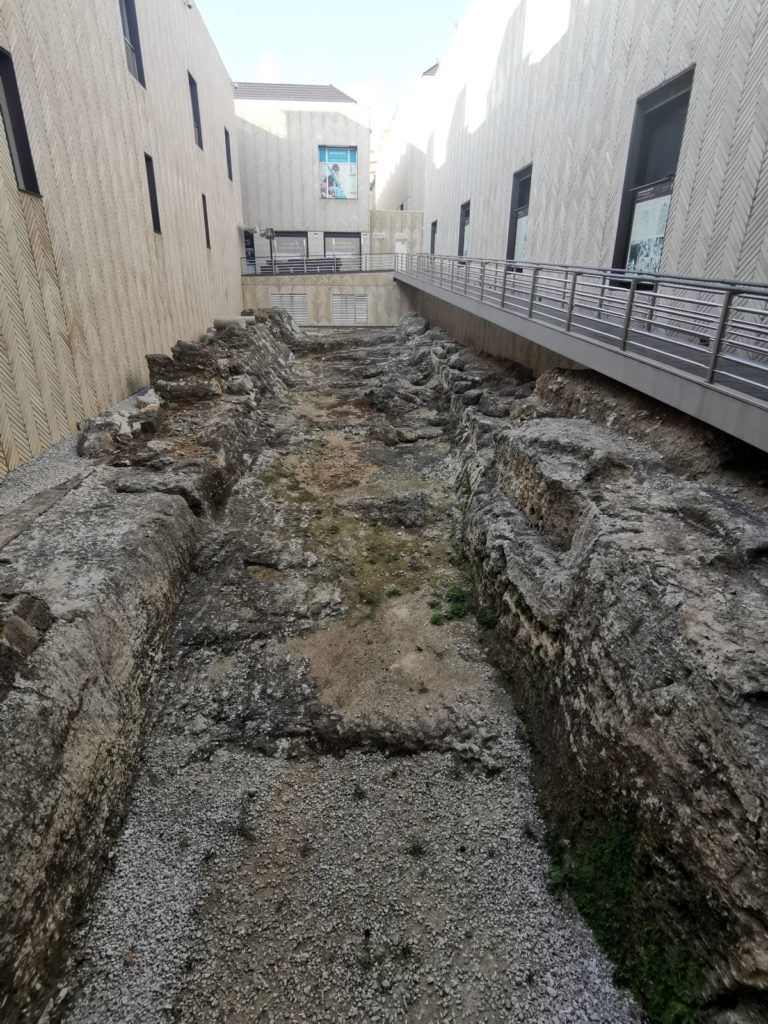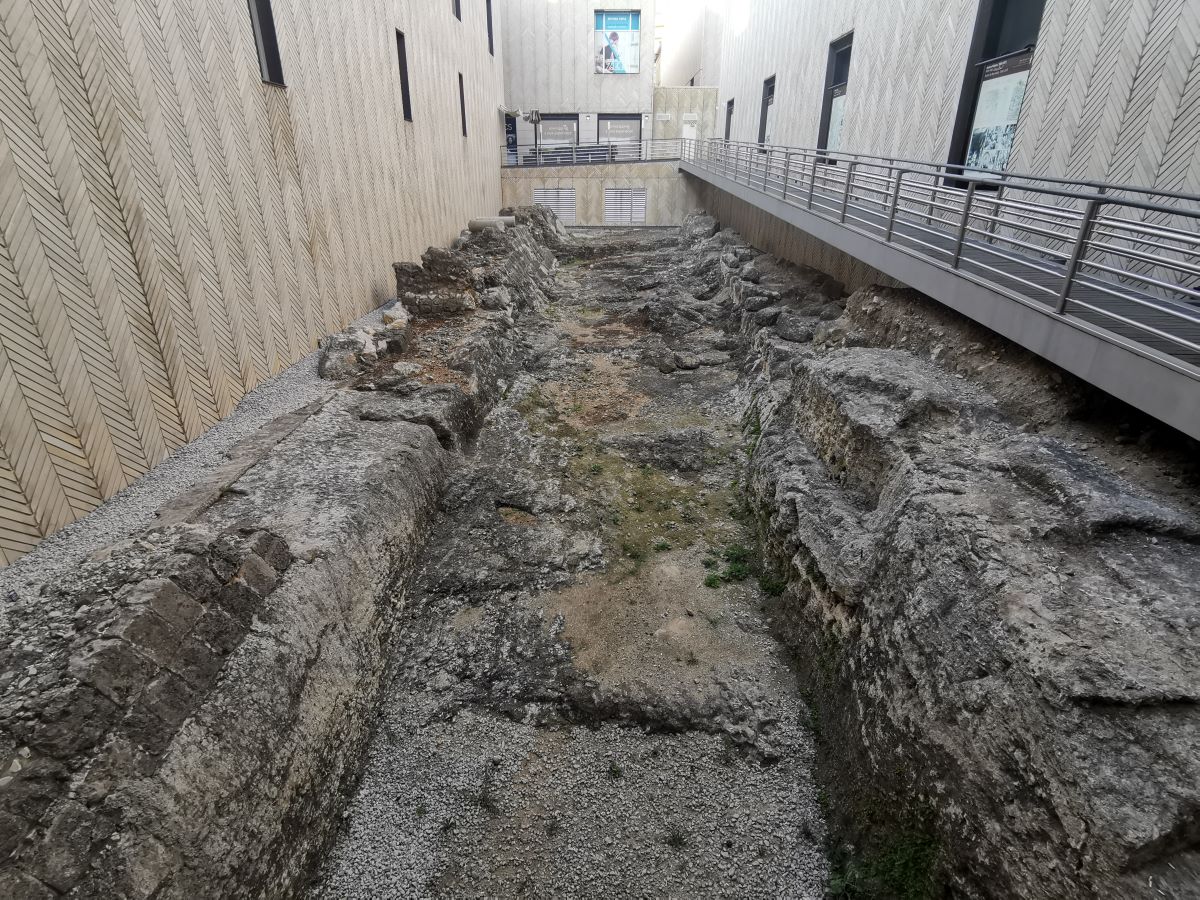During the Crusader era, most towns had a rampart with a moat as part of its defensive system.
At Beirut, two moats reinforced the defenses of the city: that of the castle, which we will be writing about soon, and the second one, which is presented in this article, is located under the city walls.
Backround
The moat is mentioned for the first time in 1184 by Pope Lucius III and during the period of the German attack in 1231, when the army of John d’lbelin tried to corner the enemy inside the city, between the moat and the castle on the western side of the city: “Maintenant l’ost dou roy Henry et dou seignor de Baruth (Beirut) passa et vint devant la veille de Baruth, [..] et ferirent des esperons jusques au fossé” translated to “Now l’ost dou roy Henry and dou seigneur de Baruth (Beirut) passed and came before the city of Baruth, [..] and made their fortifications to the ditch“.
Structure
The only portion of the ancient city’s rampart equipped with a ditch was the western side. This conclusion is based on the excavated remains found in the northwestern part of Beirut’s old souks. The ditch seems to have been oriented in a north-south direction, running parallel to the rampart, and separated from it by a berm (stretch of land). The preserved length of the ditch is over 80m, about 6.5 meters in width, and its height at around 5m. However, the northern extremity of the ditch is not clearly defined, and it seems that it widened and terminated against a natural hillock later occupied by the “Majidyyeh” Mosque.
To create the ditch, the workers took advantage of old quarries on site and dug through Byzantine layers. To compensate for the differences caused by these quarries, they built two embankments forming a scarp and a counter-scarp. Notably, ditches from the Crusader era mostly featured a counter-scarp, and some had a base that was converted into a talus (a sloping face).
The western talus, which forms a large device, is reinforced with a filling of stones, pebbles, and mortar between the bedrock and itself. Additionally, two column drums are embedded in it.
The site is accessible through the Beirut souks, on the southern side behind Fitness Zone gym.
Karim Sokhn
Tour Operator & Tour Guide
References:
Denys Pringle, Secular Buildings in the Crusader Kingdome of Jerusalem
